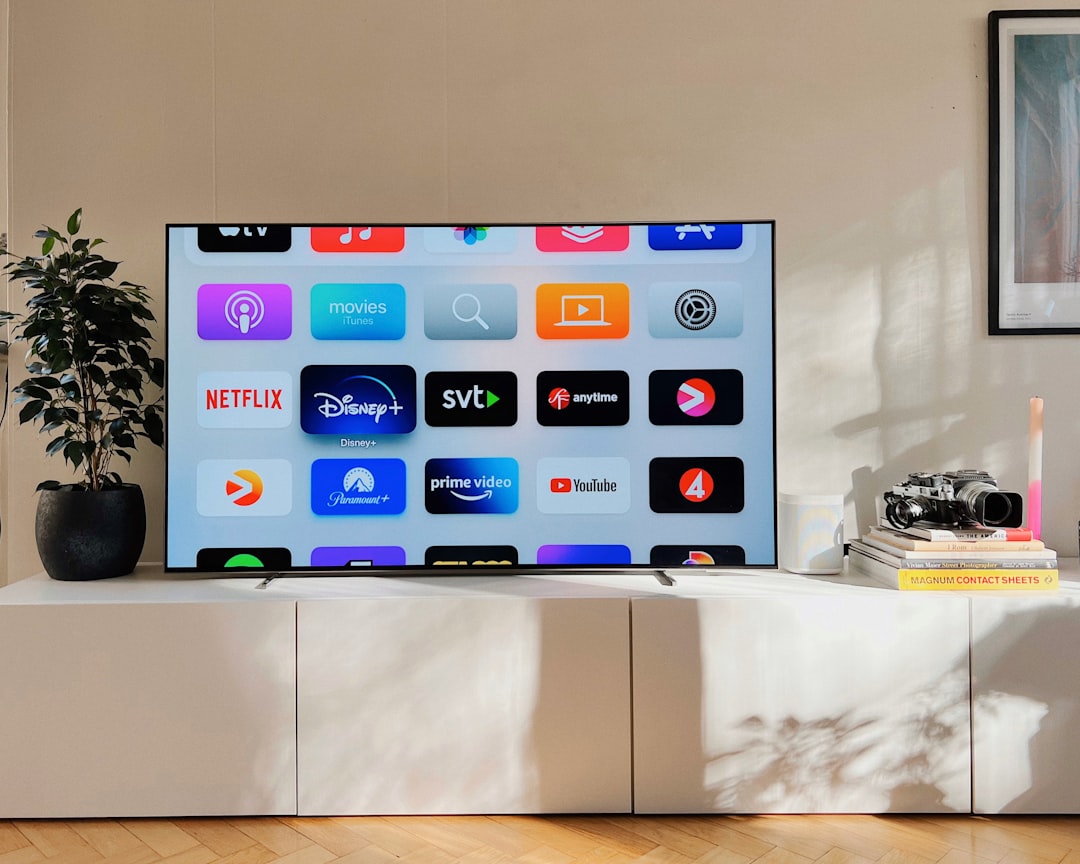The article provides an in-depth exploration of the evolution and comparison of LCD, LED, OLED, and QLED TV display technologies, as well as a discussion on future prospects and emerging trends in the industry.
TV Display Technologies Evolution
The evolution of TV display technologies has seen a significant shift over the years, marking a transition from the bulky Cathode Ray Tube (CRT) TVs of the past to the modern, sleek 4K and 8K displays that dominate the market today. This evolution has been primarily steered by the advancements in OLED and QLED technologies, which have brought about a paradigm shift in how viewers experience television content. For instance, OLED TVs, with their ability to provide deep blacks and vibrant colors by individually controlling each pixel’s illumination, offer a level of contrast and picture quality that was previously unattainable with traditional display technologies.
LCD TVs, which initially served as a revolutionary step forward in display technology, have paved the way for the development of LED, OLED, and QLED technologies. LED TVs, a subset of LCD TVs, have gained popularity due to their compact size, lower power consumption, and higher brightness levels compared to Cold Cathode Fluorescent Lamp (CCFL)-based LCDs, making them a preferred choice for many consumers. This progression showcases how each advancement in display technology builds upon its predecessor, continuously enhancing the viewing experience for consumers. Moreover, the introduction of QLED TVs, which are akin to LED TVs but incorporate Quantum Dot filters, has further elevated the color accuracy and brightness levels of displays, offering viewers a more immersive and true-to-life visual experience.

Understanding LCD, LED, OLED, and QLED Technologies
LED TVs have gained popularity as they are a type of LCD TVs that offer several advantages, including lower power consumption and higher brightness levels. For example, LED TVs use light-emitting diodes (LEDs) to illuminate the screen, resulting in improved energy efficiency compared to traditional LCD TVs, which use cold cathode fluorescent lamps (CCFLs) for backlighting. This advancement in technology not only contributes to a more eco-friendly viewing experience but also leads to sleeker and thinner TV designs that are aesthetically pleasing in modern living spaces.
In contrast, QLED TVs, which are an evolution of LED TVs, incorporate Quantum Dot filters to enrich color accuracy and brightness levels, setting them apart in terms of visual performance. By utilizing these nanocrystals, QLED TVs can produce a wider range of colors and achieve higher brightness, delivering stunning visuals that captivate viewers. This enhancement in color reproduction results in a more true-to-life image quality, making QLED TVs a preferred choice for those seeking a more immersive and vibrant viewing experience in their homes. Moreover, advancements like Mini LED technology in QLED TVs further push the boundaries of brightness levels, ensuring a dynamic and engaging display that elevates the overall entertainment experience.
Comparative Analysis of TV Display Technologies
A deeper analysis of LCD, LED, OLED, and QLED technologies unveils a spectrum of options for consumers with varying preferences and priorities. LED TVs, for instance, are favored for their cost-effectiveness, making them a popular choice for budget-conscious buyers. On the other end of the spectrum, OLED TVs stand out for their exceptional picture quality, characterized by true blacks and vibrant colors due to the absence of backlighting. However, OLED technology presents challenges such as screen burn-in, which can be a concern for users who display static images for extended periods.
Moreover, QLED technology has emerged as a compelling middle ground between LED and OLED displays, offering advancements like Quantum Dot filters that enhance color accuracy and brightness levels. With QLED TVs, viewers can enjoy vivid and lifelike images that bridge the gap between the affordability of LED TVs and the superior picture quality of OLED displays. This balance positions QLED as a versatile option for consumers seeking a high-quality viewing experience without the premium price tag associated with OLED TVs.

Future Prospects and Emerging Trends in TV Display Technologies
Looking ahead, the landscape of TV display technologies is poised for remarkable advancements that promise to redefine the viewing experience. One notable trend on the horizon is the introduction of 3D-printed flexible OLED displays, a cutting-edge innovation that could revolutionize the design and functionality of television screens. By leveraging this technology, manufacturers can create displays that are not only visually stunning but also flexible, opening up new possibilities for curved or rollable screens that enhance user engagement.
Moreover, the continuous evolution of resolution capabilities is another key area where TV display technologies are expected to make significant strides. The push towards higher resolutions, such as 8K and beyond, aims to deliver unparalleled clarity and detail in on-screen content, offering viewers a truly immersive visual experience. These advancements are not just about sharper images but also about creating a more lifelike viewing environment that blurs the line between the on-screen action and reality. As display resolutions continue to improve, viewers can look forward to enjoying content with exceptional clarity and realism, making every viewing session a cinematic delight.
Innovations in OLED Display Technology
OLED technology has significantly impacted the display market by offering competitive alternatives to traditional LCDs. One of the key advantages of OLED displays is their self-emissive nature, which means each pixel produces its light, resulting in deeper blacks, higher contrast ratios, and more vibrant colors compared to LCDs. This feature allows OLED TVs to deliver stunning picture quality with enhanced color accuracy and brightness levels, making them a sought-after choice for consumers looking for top-notch viewing experiences.
Moreover, OLED displays exhibit stable emission even over bending cycles, showcasing their mechanical flexibility. This characteristic opens up possibilities for innovative applications, such as wearable displays that can conform to different shapes and surfaces without compromising performance. For instance, manufacturers are exploring the integration of OLED screens in wearable technology like smartwatches and fitness bands to provide users with dynamic and interactive visual feedback. Additionally, the revolution in smartphones can be seen with the introduction of flexible OLED screens by leading companies like Samsung and Motorola, enhancing user experiences with sleek designs and improved functionality. The advancements in OLED technology not only benefit the TV industry but also extend to other electronic devices, driving a wave of innovation and user-centric product development.
Advancements in NanoLED and MicroLED Technologies
NanoLED and MicroLED technologies are paving the way for the future of TV displays, offering remarkable advancements in the industry. NanoLED TVs are revolutionizing the viewing experience by eliminating the need for backlights, providing flexibility, and potentially reducing production costs. These TVs promise peak brightness levels that exceed an impressive 600,000 nits, surpassing the capabilities of traditional display technologies. For example, NanoLED TVs deliver vibrant and stunning visuals, making them ideal for users who prioritize exceptional picture quality and brightness in their viewing experience.
On the other hand, MicroLED TVs are emerging as a cost-effective option with exceptional brightness and power efficiency, poised to become more affordable by 2027. These TVs are designed to offer viewers a high-quality visual experience without compromising on energy efficiency. For instance, MicroLED technology allows for sharper images, improved color accuracy, and reduced power consumption, making it an attractive choice for consumers looking for a balance between performance and cost-effectiveness in their TV displays. The anticipated affordability of MicroLED TVs in the near future is expected to make this cutting-edge technology more accessible to a wider range of consumers, further driving innovation in the TV display market.
